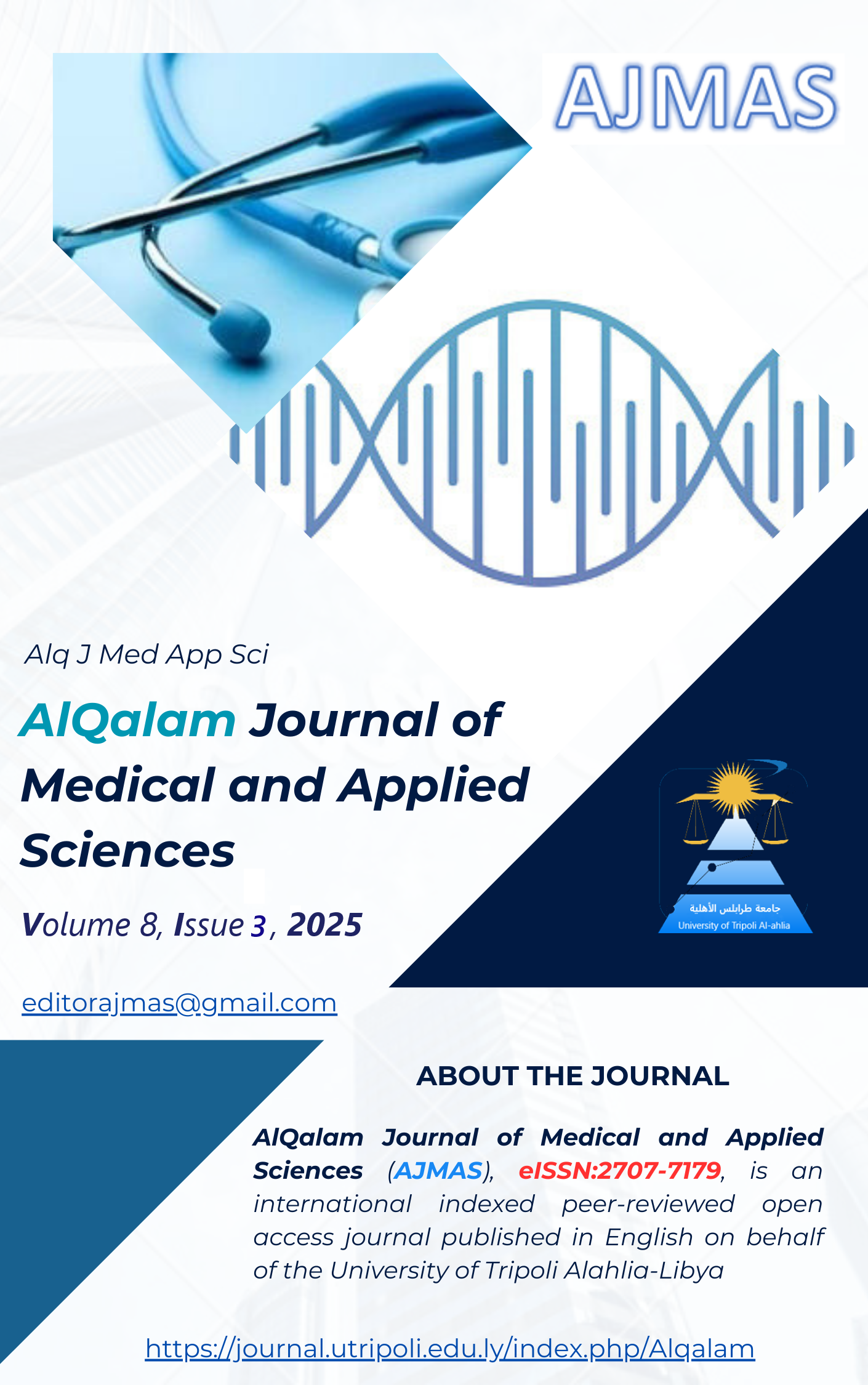Children's Urinary Tract Infections: A Retrospective Study at Al-Khadra Hospital
DOI:
https://doi.org/10.54361/ajmas.258376Keywords:
Escherichia coli, UTI, Cefixime, Pediatric, Cefotaxime.Abstract
Urinary Tract Infection (UTI) is a common and serious bacterial infection in children, predominantly caused by Escherichia coli. Accurate diagnosis is challenging, especially in young, pre-continent children, with urine culture remaining the gold standard. Treatment should follow local guidelines and sensitivity patterns, while the use of antibiotic prophylaxis remains controversial due to rising resistance and limited impact on long-term outcomes like renal scarring. This study aimed to determine the prevalence, associated clinical features, and causative pathogens of urinary tract infections (UTIs) in children, while also assessing antibiotic resistance patterns and the effectiveness of empirical antibiotic treatment. This retrospective study was conducted in the Pediatric Department of Al-Khadra Hospital over five months, from January 2024 to May 2024. The study sample consisted of 50 pediatric patients, aged between 1 month and 17 years. Of the total participants, 17 were male, and 33 were female. Data were obtained from patient records stored in the hospital's archives. The collected data focused on various parameters related to urinary tract infections (UTIs), including laboratory investigations such as Complete Blood Count (CBC), C-reactive Protein (CRP), urea, creatinine, urine culture, and body temperature. The study demonstrated a female predominance in UTI cases (66%), with the highest incidence observed in children over 6 years (36%) and infants aged 1–12 months (30%). Hospital stays varied, with the majority (26%) lasting 4 days. Laboratory findings revealed elevated urea and CRP levels in almost all patients, indicating systemic inflammation. Escherichia coli and Klebsiella spp. were the predominant pathogens, with consistent antimicrobial resistance profiles. Treatment involved intravenous Cefotaxime during hospitalization, followed by oral Cefixime upon discharge. In summary, this study reveals a significant prevalence of urinary tract infections (UTIs) in the pediatric population, with disproportionate representation in children under two years and females. Escherichia coli and Klebsiella species were identified as the predominant causative bacterial pathogens. Further large-scale, multi-center studies are required to comprehensively elucidate the epidemiology and pathogenesis of pediatric UTIs and optimize management strategies.
Downloads
Published
How to Cite
Issue
Section
License
Copyright (c) 2025 Mohamed Mhimed, Mohamed Abdulsamad, Ashraf Nass, Mohamed Agila, Mahmud Abushhewa, Omima Al Nass

This work is licensed under a Creative Commons Attribution 4.0 International License.















